🚀 Wall Street's new trend: Crypto frenzy is coming, and AI stocks are becoming a 'hot potato'?
Everyone knows that AI and tech stocks have been the 'darling' of Wall Street for the past decade. Which software company doesn't have an artificial intelligence halo? Market valuations soar in an instant, and investors are thrilled. But recently, this 'cool' halo has started to fade—the attractiveness of software stocks is not as strong as before, feeling a bit like 'the hype has cooled,' and the upward momentum isn't as fierce.
Friends in the traditional financial circle are starting to worry, as relying solely on telling AI stories can no longer support the entire market. Many growth investors have found that finding innovative investment opportunities is harder than finding a 'Zen' partner. AI stock valuations are too high, with many buyers pushing prices up and consequently bringing risks along. Even the once-crazily pursued FAANG (Facebook, Apple, Amazon, Netflix, Google) stars are becoming more 'stable.' In other words, they are no longer chasing 'explosive growth' but are focusing more on stable profits and reasonable returns of about 15% per year.
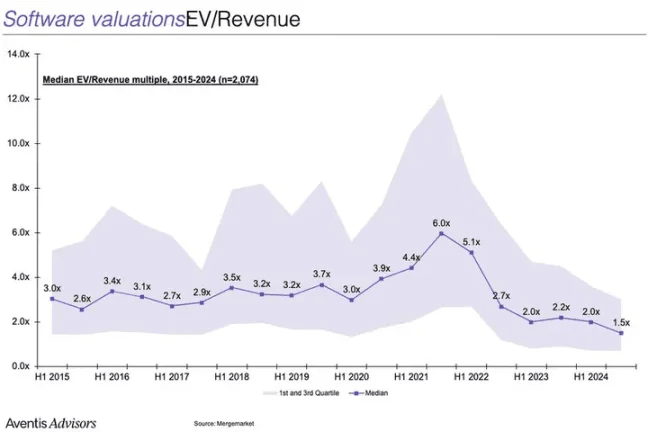
Speaking of which, you might be curious about the relevance to cryptocurrency. Here comes the point! When traditional tech stories have become 'played out,' those clever investment moguls on Wall Street have started to turn their attention to another treasure trove—cryptocurrency and blockchain technology! After all, this field is full of 'innovation' and 'futuristic vibes'; whether it's Bitcoin, Ethereum, or various DeFi and Web3 projects, they all tell the world: the future of finance is not what it used to be!
Additionally, we must see that the median enterprise value/revenue (EV/Rev) ratio of software companies has dropped below 2 times, indicating that enthusiasm for the traditional software industry has clearly cooled. In contrast, many projects in the crypto space, although volatile, still possess ample potential and narrative, attracting a large number of 'growth' investors to reinvest.
🔥 Crypto assets are shining on the stage, and both Wall Street and the President are keeping an eye on it!
Recently, the entire financial circle seems to have been ignited by an invisible 'rocket'—Bitcoin (BTC) has broken through historical highs, making even the President of the United States vigorously 'advertise' crypto assets at press conferences, as if this is the nation's future 'new gold'!
In fact, this wave of enthusiasm is quite different from the NFT and Dogecoin craze a few years ago. Back then, everyone was playing memes and snatching avatars, more for 'fun.' But this time, the main character is 'digital gold' Bitcoin, along with stablecoins, tokenized assets, and innovations in payment methods—these are the real game-changers for the future economic landscape.
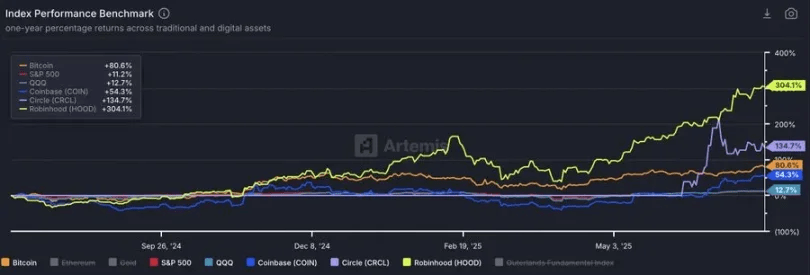
Did you know? Now superstars like Stripe and Robinhood regard crypto assets as the 'secret weapon' for the next phase of growth. Stripe has stated that crypto payments are the future trend; Robinhood is also betting that crypto assets are key to driving user activity and trading volume. Moreover, Coinbase (COIN) has proudly 'entered' the S&P 500 index, officially becoming the focus of mainstream investors!
Circle has even stated: Crypto assets are not just a gimmick; they are a truly powerful story that reignites the vitality of growth stocks. Don't be fooled by the disdain for many growth stocks due to lack of profitability; the growth potential of crypto assets makes investors willing to overlook short-term gains and bet on the future!
Speaking of which, we can draw a comparison: who excites investors more, Bitcoin (BTC), Coinbase (COIN), Robinhood (HOOD), Circle (CIRCL), or traditional large-cap indices like the S&P 500 (SPY) and Nasdaq 100 (QQQ)? The answer is clear: this time, crypto assets are no longer a fringe topic but a new track that Wall Street and tech giants are competing to lay out!
🔥 How is ETH really doing? How do Wall Street and the crypto community view it?
Speaking of smart contract platforms, crypto players are quite familiar—Solana, Hyperliquid, and a bunch of new chains and Rollups are popping up as if they are on steroids, competing fiercely like leveling up in a game, with no one wanting to back down easily.
But we also understand that the status of Ethereum (ETH) as a 'big shot' is being challenged, and it even feels a bit like a 'life-and-death' situation. Its value accumulation problem has not been completely solved, which makes many old players anxious.
However, those suited moguls on Wall Street might not truly understand these small secrets of the blockchain circle. To be honest, most of the 'outsiders' on Wall Street may not even know where Solana is, while they've heard of XRP, Litecoin, Chainlink, Cardano, and Dogecoin much more. After all, they haven't paid much attention to this 'new land' of crypto assets for years.
But one thing they understand: ETH stands the test of time, is a 'veteran' in the crypto space, and has always kept pace with Bitcoin. Wall Street likes stable value and liquidity, and ETH is the only crypto asset besides BTC that has a liquid ETF. In simpler terms, ETH is like an old blue-chip stock in the financial circle, very stable.
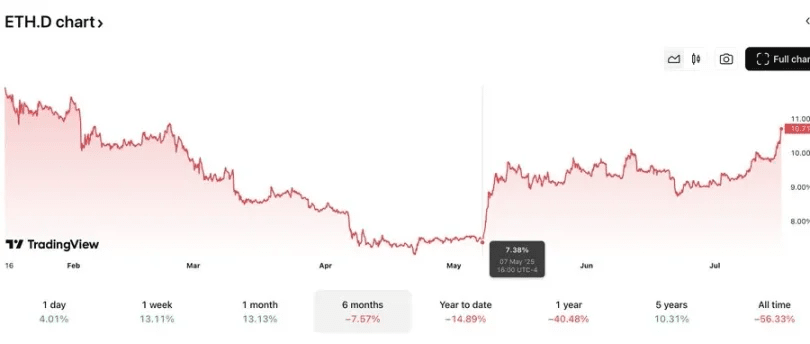
More importantly, Wall Street knows about major platforms like Coinbase and Kraken, not to mention that Robinhood also announced its 'bet' on Ethereum. A quick look at the books reveals that ETH has the largest on-chain stablecoin pool, which is a significant positive. Coupled with their ability to calculate 'moon math'—even though BTC hit new highs, ETH's price is still over 30% lower than its peak in 2021, which means a 'bargain' opportunity for them.
You might think that ETH's relatively poor performance is a bearish signal? Wrong! These traditional investors play differently; they prefer to buy assets with low prices and clear targets rather than 'pump and dump' coins.
I bet they have quietly entered the market. It's not that hard to move funds; as long as the funds have momentum, crypto asset investments can fully roll out. Although our crypto buddies have been saying for more than a year that they wouldn't touch ETH, the reality is that this veteran coin has performed excellently for a whole month, steadily.
To be more hardcore: From the beginning of this year to now, the exchange rate of Solana against ETH has dropped nearly 9%. After hitting bottom in May, ETH's market cap share has rebounded all the way, marking its longest uptrend since mid-2023.
🚀 ETH is attracting new buyers, and the influx of money is getting stronger!
Since March this year, funds for spot ETFs have been pouring into the ETH market like they've been equipped with accelerators, practically giving ETH the green light! Data from Coinglass shows that this wave of buying is quietly pushing ETH onto a new stage.
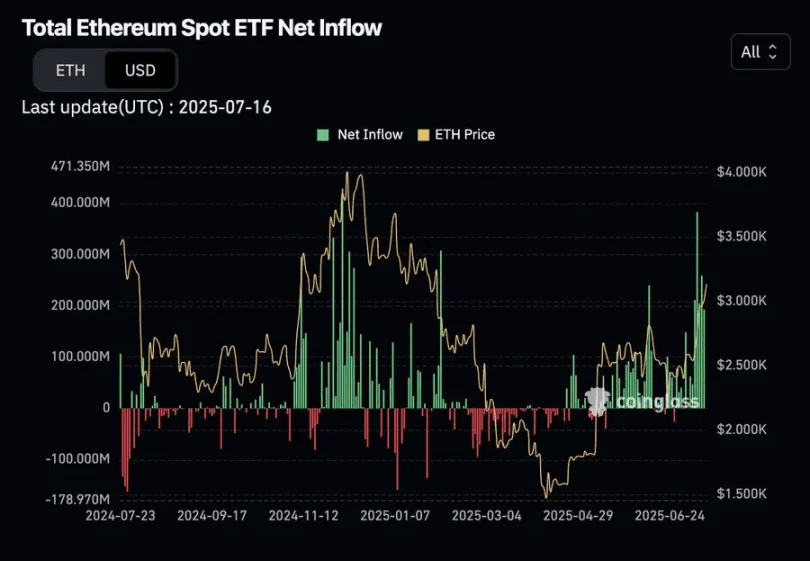
Interestingly, ETH's 'micro-strategy' fans are also becoming active, adding structural leverage 'thrust' to the market, making price momentum even stronger.
In fact, even many veteran crypto players have started to reflect—Bitcoin (BTC) and Solana (SOL), which have been galloping ahead for the past two years, have performed excellently, but people are gradually realizing that their ETH holdings are insufficient and are starting to slowly withdraw funds from BTC and SOL to reinvest in ETH.
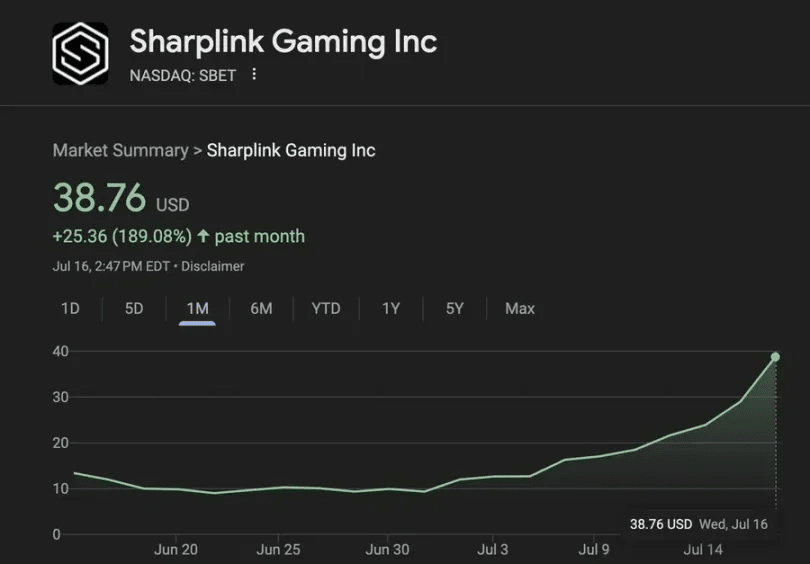
Does this mean all of ETH's problems are solved? Hold on, the truth is: the technical challenges of the ETH network still exist, but the current trend is that ETH as an asset is beginning to 'divorce' from its blockchain itself.
In other words, investors are paying more attention to ETH's value potential rather than just the technical complexities behind it. It's like buying a house; you care more about the appreciation potential of the property than the details of its decoration.



